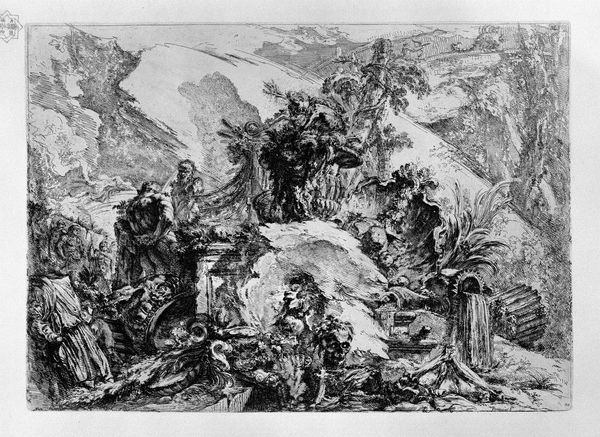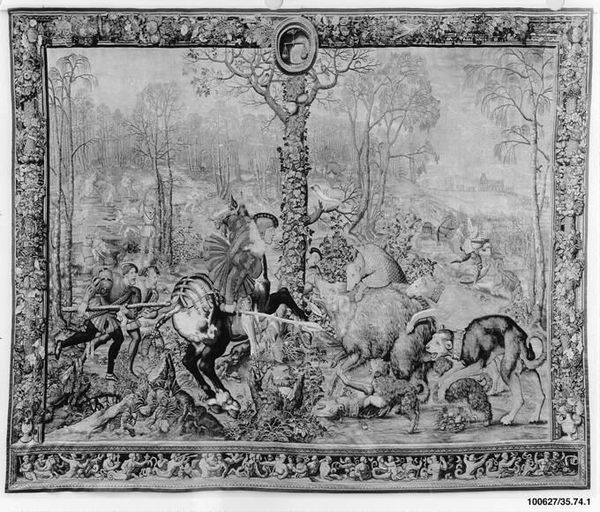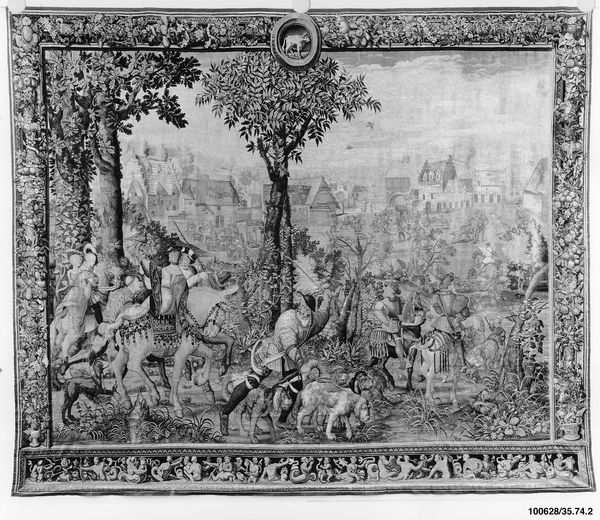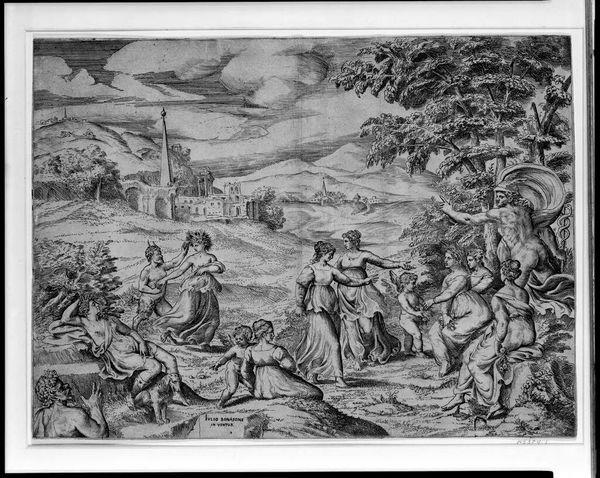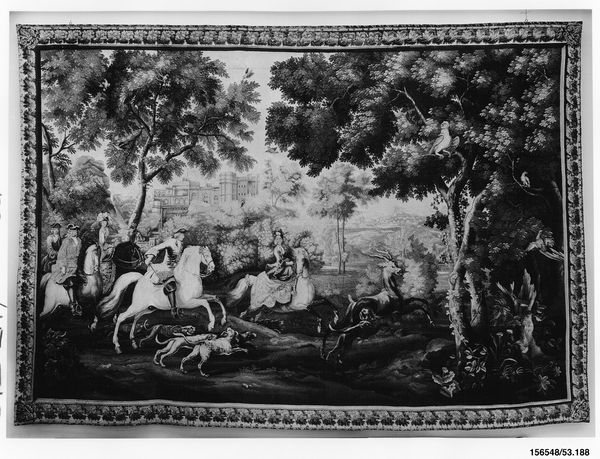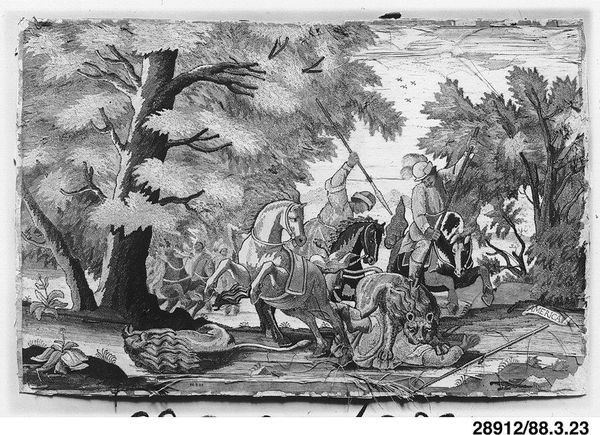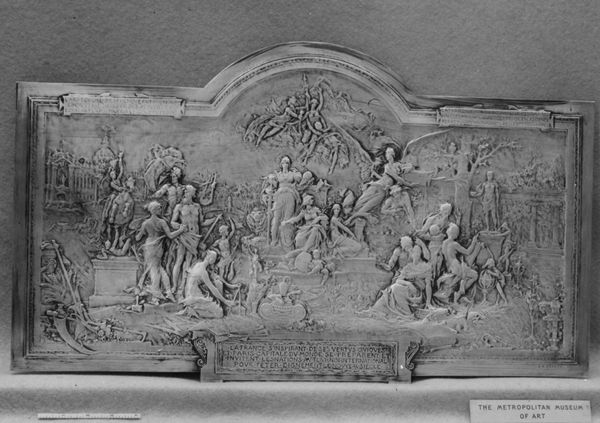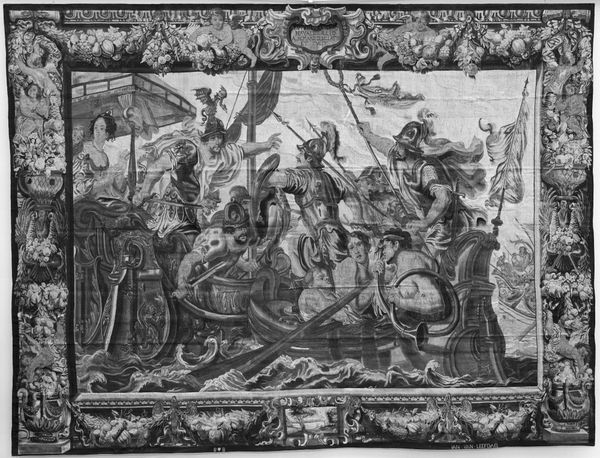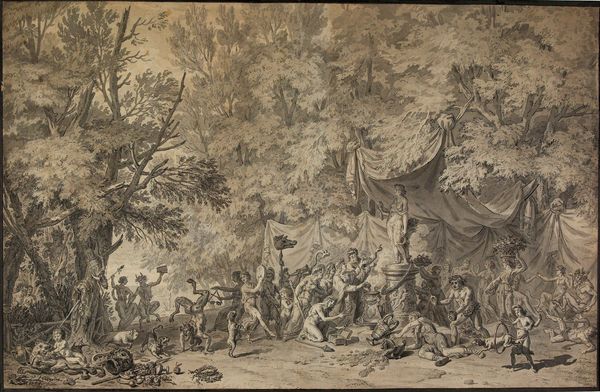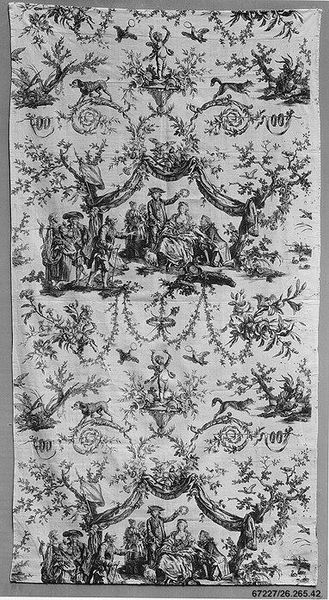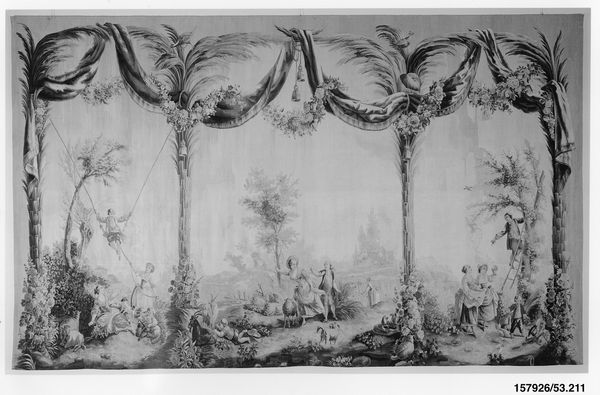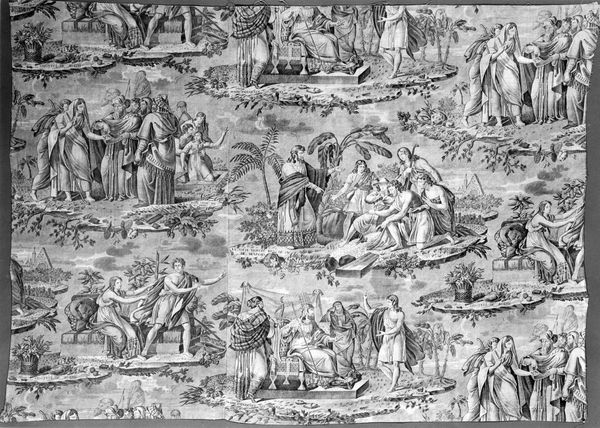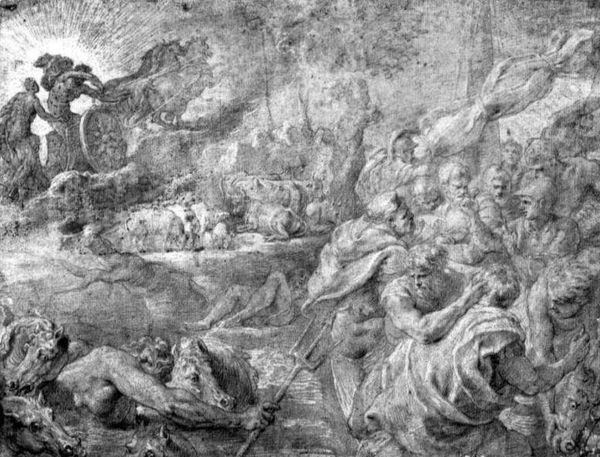
The Battle of Arbela from a set of The Story of Alexander 1695 - 1740
0:00
0:00
weaving, textile
#
narrative-art
#
baroque
#
weaving
#
textile
#
history-painting
#
decorative-art
Dimensions: 8 ft. 9 in. × 12 ft. (266.7 × 365.8 cm)
Copyright: Public Domain
Curator: Wow, my first impression is just…chaos! A beautifully rendered, elegant chaos, but chaos nonetheless. It feels overwhelmingly dramatic, all this frantic energy frozen in a single moment. Editor: This tapestry, created sometime between 1695 and 1740, depicts "The Battle of Arbela" and comes from a series entitled “The Story of Alexander." It's attributed to the workshop of Charles Le Brun. The piece lives here at the Metropolitan Museum of Art. As a weaving, it translates military narrative into something surprisingly…domestic? Curator: Domestic, maybe…but hardly subtle. Le Brun is pulling out all the stops! Look at the dynamism! The twisting bodies of men and horses locked in combat, the flags snapping in the wind, the theatrical lighting. There's even what looks like a flying eagle thrown in. Editor: It's a Baroque interpretation, so spectacle is, of course, central to both art and politics. And to view this battle outside its context would do a disservice to a multitude of intersectional narratives that focus on imperialism and colonization that began with the expansion of empires like Alexander the Great's. These acts forever shifted ideas related to identity, race, gender and social stratifications as forms of forced subservience played out among different classes of citizens, among men and women, or groups based on perceived immutable qualities, among others. Curator: So, it’s more than just decorative frippery… it's actively promoting power and legitimizing a certain worldview? Although, to be honest, it almost feels too grandiose to be taken entirely seriously. Like, if you turn the volume up to eleven, sometimes people just laugh. Editor: Possibly! It certainly invites scrutiny now, centuries removed. Consider, too, how tapestry functioned: enormous, woven surfaces, meant to be transported. This tapestry becomes portable propaganda – and thus requires decoding, in light of modern thinking about agency and oppression. Who benefits from this heroic vision? Curator: It gives me a lot to consider...all this glorification carefully rendered in thread and dye. Almost makes the chaos seem… purposeful. Editor: Exactly. History and textile; a soft, tactile representation of the conquests of patriarchy. I leave that contradiction with the listeners as they continue their journey.
Comments
No comments
Be the first to comment and join the conversation on the ultimate creative platform.
